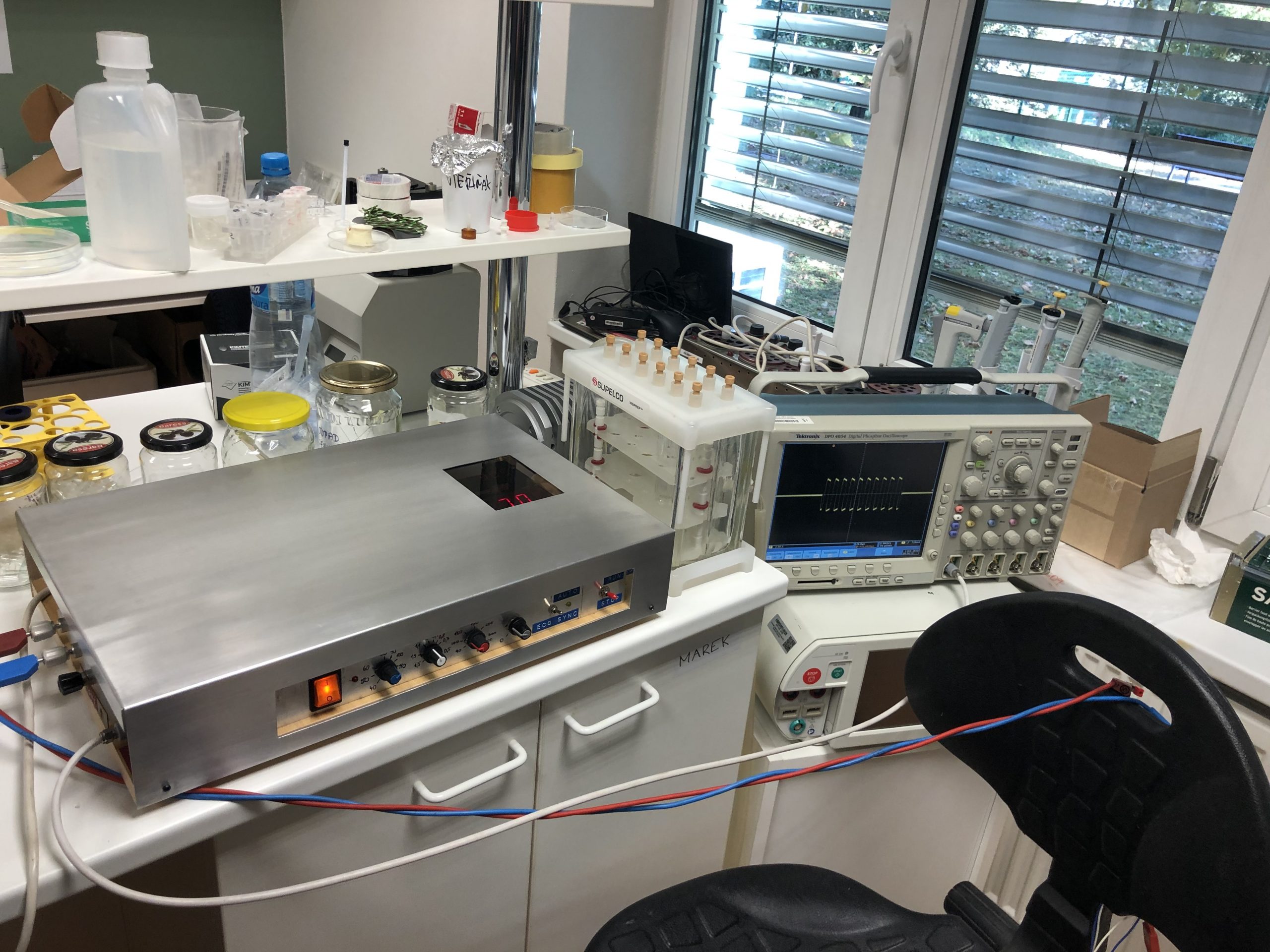High voltage AC power supply for electroporation purposes in treatment of cardiac arrhytmia
INTRODUCTION:
The electroporation generator of high voltage pulses has been the first and so far the only electroporation generator prepared for clinical interventional electrophysiology. Clinically relevant settings including ECG synchronization have been prepared in detail for preclinical and clinical use. At the same time, connection to standard catheters, electrophysiological analytical systems and oscioloscopes was prepared. It is the first alternative to current thermal technology enabling ablation of cardiac tissue. The device is used to treat cardiac arrhytmia which affects millions of people workdwide and is one of leading causescof death among cardiovascular diseases.
TECHNOLOGY (INVENTION) DESCRIPTION:
The generator is a programmable stand-alone device using DC power as single pulses, or a set of pulses representing AC. The devices meet the safety and technical criteria for biomedical devices of the corresponding category and have been tested on an animal model to demonstrate the device's effectiveness and safety against the current radiofrequency ablation standard. The electroporation system consists of: 1.) The ECG synchronization module has the task of identifying the QRS complex sufficiently reliably by software analysis of the ECG signal and then triggering the electroporation pulse at the right time via the AC or DC power module. 2.) AC power module providing 1500V voltage and 12A current at 70-450kHz, the purpose of which was only to verify the usability of the topology.
ADVANTAGES OVER EXISTING SOLUTIONS:
There are currently no irreversible electroporation generators available for use in interventional cardiology. In the literature it is possible to trace a number of partially modified devices originally intended for oncological and molecular biological applications, but these are sub-optimal and non-commercializable from the cardiology point of view. In the field of cancer mass reduction, the Angiodynamics Nanoknife is a commercially available device which, however, is not usable in cardiology without further technical modifications and the safety of use in the heart remains a question.
DEVELOPMENT STATUS (STAGE):
Fully developed and tested on animal models.
PUBLICATIONS:
Feasibility of directional percutaneous epicardial ablation with a partially insulated catheter. Killu AM, Naksuk N, Syed FF, DeSimone CV, Gaba P, Witt C, Ladewig DJ, Suddendorf SH, Powers JM, Satam G, Stárek Z, Kara T, Wolf J, Leinveber P, Crha M, Novák M, Bruce CJ, Friedman PA, Asirvatham SJ. J Interv Card Electrophysiol. 2018 Oct;53(1):105-113. Use of Bipolar Radiofrequency Catheter Ablation in the Treatment of Cardiac Arrhythmias. Soucek F, Starek Z. Curr Cardiol Rev. 2018;14(3):185-191. Irreversible electroporation-Let's keep it cool. Caluori G, Wojtaszczyk A, Pešl M, Stárek Z. J Cardiovasc Electrophysiol. 2018 Jul;29(7):E12.
IP PROTECTION STATUS:
Utility model registered by the Office for Industrial Property of the Czech Republic, no. PUV 33134 Patent application.
TECHNOLOGY / IP OWNERS :
St. Anne´s University Hospital in Brno.

More information
More information is available upon signing a CDA / NDA (Confidential Disclosure Agreement / Non-Disclosure Agreement)